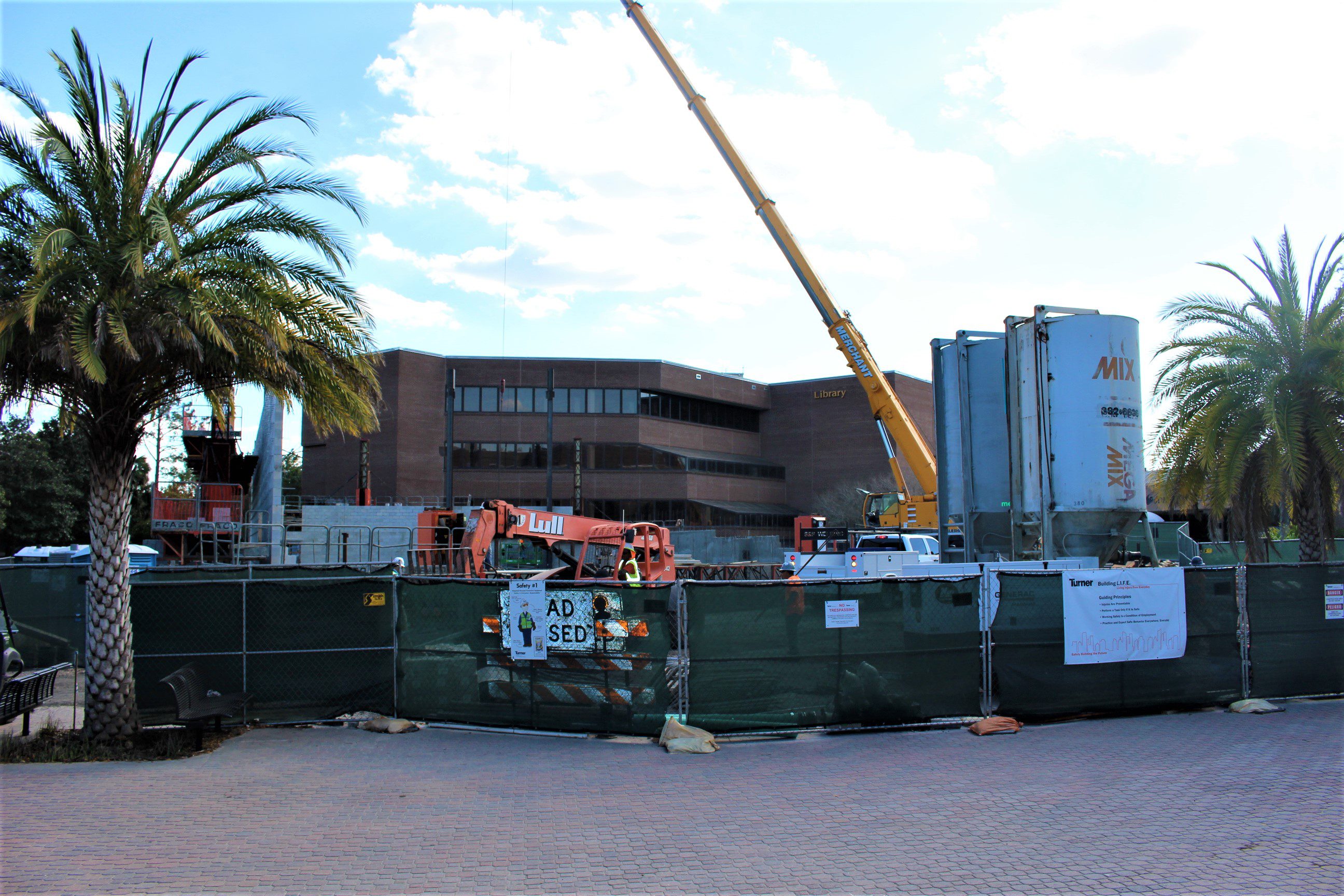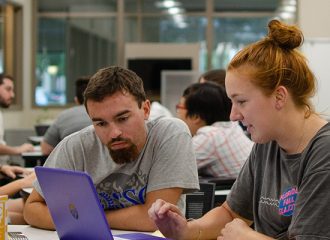by Sami Lee
Under Construction Forever. As a student at UCF, you’ve likely heard this sarcastic moniker in response to our ever-evolving campus. While this title is shared humorously, I think it’s a name we, as the University of Central Florida community, should be proud of; our campus is constantly changing and improving to better serve students and faculty.
One project I’m excited about (and I imagine you will be too) is the renovation of the university’s first building, the John C. Hitt Library. As a student who lives on campus, I realized quickly that I needed a way to keep my school life separate from my social life. My whole life seems like it occurs in my tiny little dorm, so I find it nearly impossible to concentrate on my work in the comfort of my room. The first place I scouted as a study space was—you guessed it—the library; it seemed like the obvious choice. I cannot tell you how many hours I’ve spent there, so it still surprises me when people tell me they’ve never even been to the library. With the renovation, aptly called the “21st Century Library Project,” I have a feeling that is going to change. Given that the library dates to 1967, it’s understandable that it needs some work to meet the needs of modern visitors.

This three-phase undertaking intends to shift the environment from a focus on resources to a focus on the user. To me, this says that UCF has heard the voices of students and faculty, and is actively working to be better. Complaints of limited seating, dated restrooms and elevators, limited power outlets, and difficulty finding materials—to name a few—are being addressed, and hopefully will soon be a thing of the past. Even getting to the library will be easier with the incorporation of an entrance that will face the Student Union. Phase one, which has already started and is scheduled for completion during the Fall 2017 semester, includes the addition of an Automated Retrieval Center (ARC) featuring five robotic arms that will navigate specially designed three-story tall shelves with the capacity to eventually host 1.25 million print volumes. Students will be able to request materials online and have them within minutes, instead of having to painstakingly navigate the open stacks for just the right book. Moving resources to the ARC is said to free up enough space for 1,600 more seats (the project is estimated to create 3,264 new seats in total) and the building will feature a reading room on the fourth floor, to be completed in future phases.
This phase also includes more outlets, a new quiet-study area, and updates to existing restrooms, elevators, and stairwells and sprinklers for increased fire safety. Phases two and three will connect the existing structure to the new ARC building and will involve a remodeling of the current libraries—but not to worry, only certain parts of the library will be restricted at a time, so you can keep accessing the building and its resources during this project.

If you’re like me and spend a lot of time in the library already, you have some exciting improvements to look forward to. If you haven’t been yet, I encourage you to try it out—it’s only getting better.




